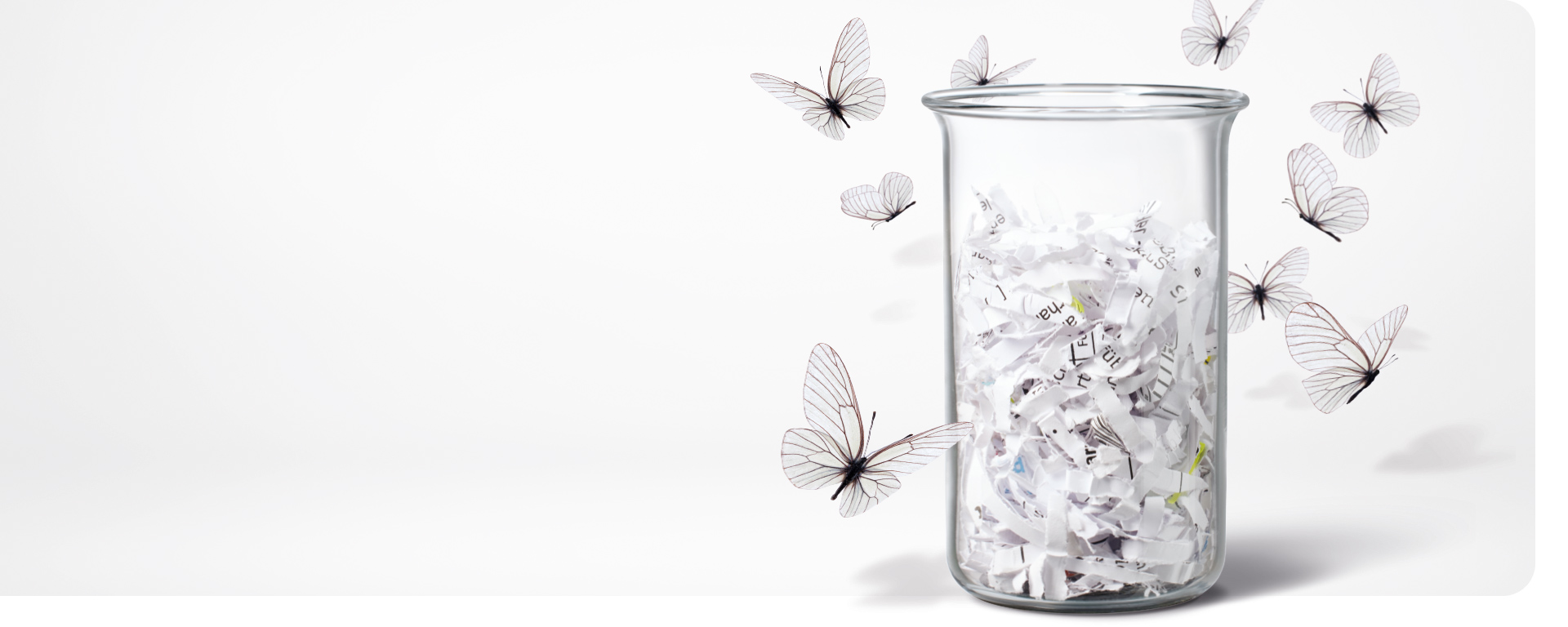Search
REMONDIS’ business locations around the world
Being one of the world’s leading recycling, service and water companies, REMONDIS has around 1,000 business locations across the globe. These can be found in over 30 countries in Europe, Africa, Asia and Australia.
REMONDIS’ business locations in Germany
REMONDIS’ business activities in Germany are managed and carried out by its six regional companies. REMONDIS also has a whole variety of specialist companies, many of which are based here in Germany as well.

Paper, card and cardboard are among the traditional group of recycled materials like glass, wood and metal.
The recycling rate of paper, card and cardboard remains at a consistently high level (> 75%); for the most part, the opportunities for using old paper have been exhausted. The latter can be seen by the recycling rates, which have remained at about the same level for many years now and reflect the proportion of old paper consumed in relation to the overall amount of paper consumed. Generally speaking, paper is perfect for recycling.

Paper, card and cardboard – perfect for recycling
Paper fibres can be recovered and reused up to six times to make new products. The quality of the fibres, however, decreases each time they are used so that a downcycling effect is unavoidable. Nevertheless, there are many reasons why paper recycling is well worth its while. Compared to paper produced from virgin raw materials, it requires far less energy and causes far fewer carbon emissions. Moreover, it needs far fewer natural resources, such as wood and water. The levels of wastewater contamination are also much lower than the wastewater generated by paper produced from virgin fibres.
Paper recycling rates (in %)


Source: VDP [Association of German Paper Mills] 2020, Ein Leistungsbericht [A Performance Report]
Some old paper comes from abroad
Recycled paper is a commodity that is both imported and exported. Germany normally imports more than it exports. This explains why, for example, around 15 million tonnes of old paper were recycled in Germany in 2015 but way over 16 million tonnes were used to make new paper products.
Amount of paper recycled per year (2015)

Savings compared to paper made from virgin fibres:


Recycling can’t solve everything
Germany is not only a world leader in recycling paper but also in consuming it. We use as much paper here as all the people in South America and Africa put together. Even recycling cannot compensate for such a wasteful use of paper. On top of this is the fact that paper consumption is particularly high in an area that recycling is unable to counteract because the end of the downcycling spiral has been reached. The area in question is hygiene products such as toilet paper and kitchen roll. Every person living in Germany uses 18 kilogrammes of these products every year. Average per-capita consumption across the EU lies at 13 kilogrammes. A more considered use of paper is, therefore, urgently needed. At the end of the day, no matter how high the recycling rate may be, what is crucial here is what volumes of paper are being produced using virgin raw materials in the first place. And it must be our goal to reduce this figure.

Trees as a virgin raw material for producing paper Around the globe, approximately every fifth tree felled is used to produce paper. The results are dwindling stocks and the emergence of monoculture forests that are far more likely to be damaged by pests and bad weather conditions




